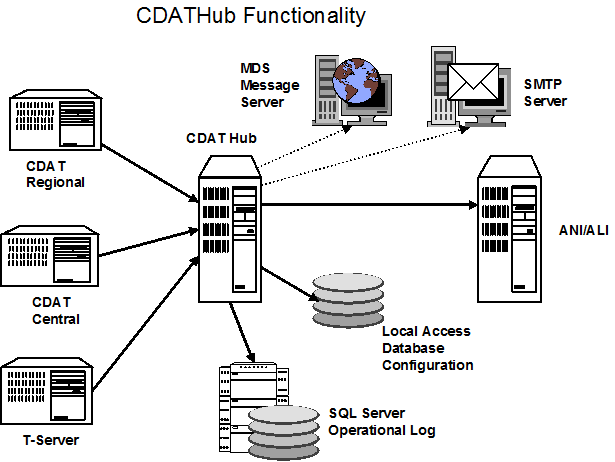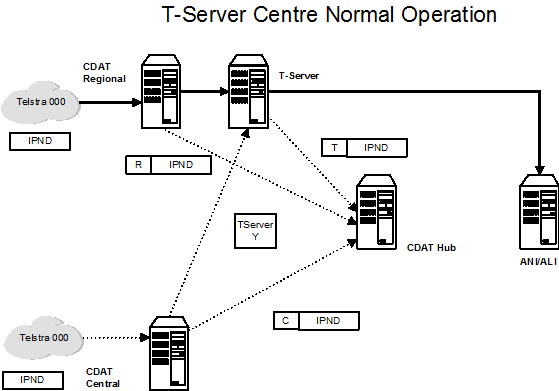Overview
CDATHub is a single application which in
conjunction with other distributed applications perform the task of
providing redundant feeds of CLI 000 information to VisiCAD
operators.
CDATHub is a TCP connected application which
accepts CLI details from regional centres and the central CLI feed.
The data is then passed through a set of rules which have been
installed into a state machine, and a decision is created to send or
not send a redundant CLI data packet to the ANI-ALI. Data packets
are sent to ANI-ALI if it has been determined that data packets have
not arrived in a timely manner in the redundant process.
The Hub is configured from an Access database
with connection details of all the TCP sockets and operational
parameters required to enable the application to perform the rules
and report on any anomalies in its operation.
The TCP connections into and out of the Hub are
designated CDATServers and Hub Outputs respectively. CDATServers are
the regional centre applications collecting 000 CLI details from the
local Telstra routers. Hub Outputs are the ANI-ALI devices which
receive a packet based on the rule set.
Apart from the input and output systems there
are logs and status information showing the internal operation of
the application.
Errors can routed to a mail server and or a
message server to alert support staff of any problems encounted by
the Hub.
In general once the application starts there is
no need to stop it. All relevant configuration changes can be made
in the application whilst it is operating. Changes are acted on
immediately and reflected in the human interfaces for confirmation.

Data Flow
The 000 CLI data packet (IPND) originates from
Telstra and is delivered to the regional centre and a centralised data
collection point by routers on Telstra's private TCP network.
For each 000 call generated, an IPND is sent to the
region and a second to the central device. Each IPND is processed by the
CDATServer application running on dedicated workstations in both
locations.
The diagram below shows the IPND data flow once the
IPND has entered the CDAT system.

Packets are routed to CDATServers, Central
CDATServer and TServers. These devices send packets to the CDATHub and
are all inputs into the Hub.
The Hub must be configured to handle all the TCP
connections to these devices and it does this using a local Access
database. See Configuration tab on this page.

